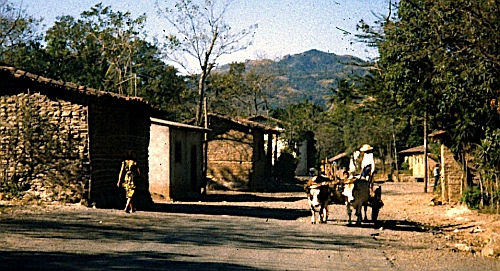Let’s talk about Salvadorans
A total of 1.6 million Hispanics of Salvadoran origin resided in the United States in 2008, according to the Census Bureau’s American Community Survey. Salvadorans in this statistical profile are people who self-identified as Hispanics of Salvadoran origin; this means either they themselves are Salvadoran immigrants or they trace their family ancestry to El Salvador. Salvadorans are the fourth-largest population of Hispanic origin living in the United States, accounting for 3.3% of the U.S. Hispanic population in 2008. Mexicans constituted 30.7 million, or 65.7%, of the Hispanic population.
1 This statistical profile compares the demographic, income and economic characteristics of the Salvadoran population with the characteristics of all Hispanics and the U.S. population overall. It is based on Pew Hispanic Center tabulations of the 2008 American Community Survey. Key facts include:
• Immigration status. Nearly two-thirds of Salvadorans (64.7%) in the United States are foreign born, compared with 38.1% of Hispanics and 12.5% of the U.S. population overall. Most immigrants from El Salvador (58.4%) arrived in the U.S. in 1990 or later. Three-in-ten of Salvadoran immigrants (29.2%) are U.S. citizens.
• Language. Less than half of Salvadorans (44.2%) speak English proficiently.2 Some 55.8% of Salvadorans ages 5 and older report speaking English less than very well, compared with 37.3% of all Hispanics.
• Age. Salvadorans are younger than the U.S. population and older than Hispanics overall. The median age of Salvadorans is 29; the median ages of the U.S. population and all Hispanics are 36 and 27, respectively.
1 Percentages are computed before numbers are rounded.
2 Salvadorans ages 5 and older who report speaking only English at home or speaking English very well.
• Marital status. Less than half of Salvadorans (44.6%)and Hispanics overall (46.5%) are married.
• Fertility. Four-in-ten (37.9%) of Salvadoran women ages 15 to 44 who gave birth in the 12 months prior to the survey were unmarried. That was similar to the rate for all Hispanic women—38.8%—but greater than the rate for U.S. women—34.5%.
• Regional dispersion. Nearly four-in-ten Salvadorans (37.5%) live in California, and one-in-seven (14.3%) live in Texas.
• Educational attainment. Salvadorans have lower levels of education than the Hispanic population overall. Fifty-three percent of Salvadorans ages 25 and older—compared with 39.2% of all U.S. Hispanics—have not obtained at least a high school diploma.
• Income. The median annual personal earnings for Salvadorans ages 16 and older were $20,368 in 2008; the median earnings for all U.S. Hispanics were $21,488.
• Poverty status. The share of Salvadorans who live in poverty, 15.4%, is higher than the rate for the general U.S. population (12.7%) and below the 20.7% share among all Hispanics.
• Health Insurance. Four-in-ten Salvadorans (38.9%) do not have health insurance compared with 31.7% of all Hispanics and 15.4% of the general U.S. population. Additionally, 21.7% of Salvadorans younger than 18 are uninsured.
• Homeownership. The rate of Salvadoran homeownership (46.0%) is lower than the rate for all Hispanics (49.1%) and the U.S. population (66.6%) as a whole.
Source: Pew Hispanic







Hi! Is so left field!
This information fails to include a very large population in the DC / Maryland / Virgina area. I can almost be certain that this geografical ares holds more Salvadoran than California.
Also, I am surprised that you have not included thousands of Salvadoran that live in your own backyard…Georgia and the Carolinas, which triples the amount of people that live in Texas.
There is a wealth of information available to you. There many Salvadorans youth that study in Ivy League Schools and several top Universities across America. There are renowned surgeons, entrepreneurs and professional athletes. All this information may not be at all available in some instances, because there is a large segment of Salvadoran that do not live in popular pockets where one typically look for information.
I specialize in multicultural marketing having actually worked and actually lived or mingle in more than 35 markets in Latin American.
Anything I can do to help, feel free to contact me. And by the way, I worked in Argentina, too!
Oh! Last thing…I am Salvadoran
Please keep us posted on your advances with the Pew Hispanic!! Warmest regards, Claudia (PS: answered on LinkedIn)